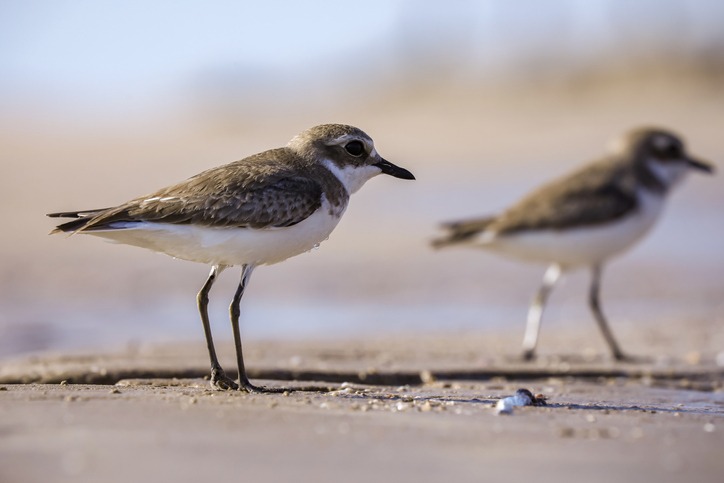It is an enigmatic, graceful, long-legged bird with dark upperwing feathers and mostly white underwings while in flight. This upland shorebird hunts during the night and spends the day resting under thick shrubs. While it closely resembles the Double-banded Courser, it boasts a more intricate stripe marks and patterns. It is known for its snicking “chik” sounds.
Read further to know more about the Three-banded Courser.
What is a Three-banded Courser?
Three-banded courser is a bird species belonging to the Glareolidae family. Their family is widespread and has a large taxonomic order, yet no cousins of this specie occur in the New World. The coursers are separated from their order through their bills’ distinct morphology, which is arched and nostrils located at its base.
Its seven levels of classification are as follows:
Kingdom: Animalia
Phylum: Chordata
Class: Aves
Order: Charadriiformes
Family: Glareolidae
Genus: Rhinoptilus
Species: R. cinctus
Three-banded Courser Physical Description
Three-banded courses have a cryptic chestnut plumage, short wings, long legs, and long-pointed bills that arches downward. As their name suggests, they have three bands. First is a black stripe that stretches backward from behind their eyes. Second is a V-shaped band on its foreneck. The third is another black band on its upper chest, close to the second band, separated only by a white band. These birds can grow up to 11 inches or 28 centimeters and weigh around 130 grams.
Where can they be spotted?
Three-banded courses thrive in dry, open Mopane or Miombo woodlands, arid savannas, and open patches produced by large mammals. Their species occur in Ethiopia, to Somalia, Kenya, Zambia, Angola, to Southern Africa. They can also be found in Zimbabwe, Botswana, Namibia, Rwanda, Uganda, Sudan, Tanzania, and Limpopo Province.
Interesting Facts You Should Know About the Three-banded Courser
Three-banded coursers feed primarily on insects. They are nocturnal and forage at night, lurking along dirt roads and using their long legs to run and catch their prey. These birds are mysterious, secretive, and seldomly seen. They prefer low rainfall areas, roosting in shrubs during the day.
These are monogamous and will form life-long bonds with their partners. They are solitary nesters and will construct nests on deep depressions on the ground under a tree or beneath the bush. Nests are lined with friable soil, twigs, and gravel.
Three-banded coursers egg-laying seasons starts from April and ends in November, peaking between August to October. The female lays 2 to 3 eggs, which both sexes incubate for around 25-27 days. They change position in about every 90 to 120 minutes. Their cryptic plumage blends perfectly on the ground, serving as their protection from predators.
The broods will be able to leave the nest within 24 hours after hatching but will remain under parental care until the next breeding season.
Three-banded coursers’ range has not experience contraction in recent history. While the destruction of woodland causes concerns on their population, these birds are tagged as a least concern species under the IUCN Red List.
WILDLIFE PARKS AND RESERVES WHERE THIS SPECIES IS FOUND:
BOTSWANA
NAMIBIA
ZIMBABWE
ZAMBIA
BOTSWANA BIRDS | SOUTH AFRICA BIRDS
NAMIBIA BIRDS | ZAMBIA BIRDS | ZIMBABWE BIRDS

